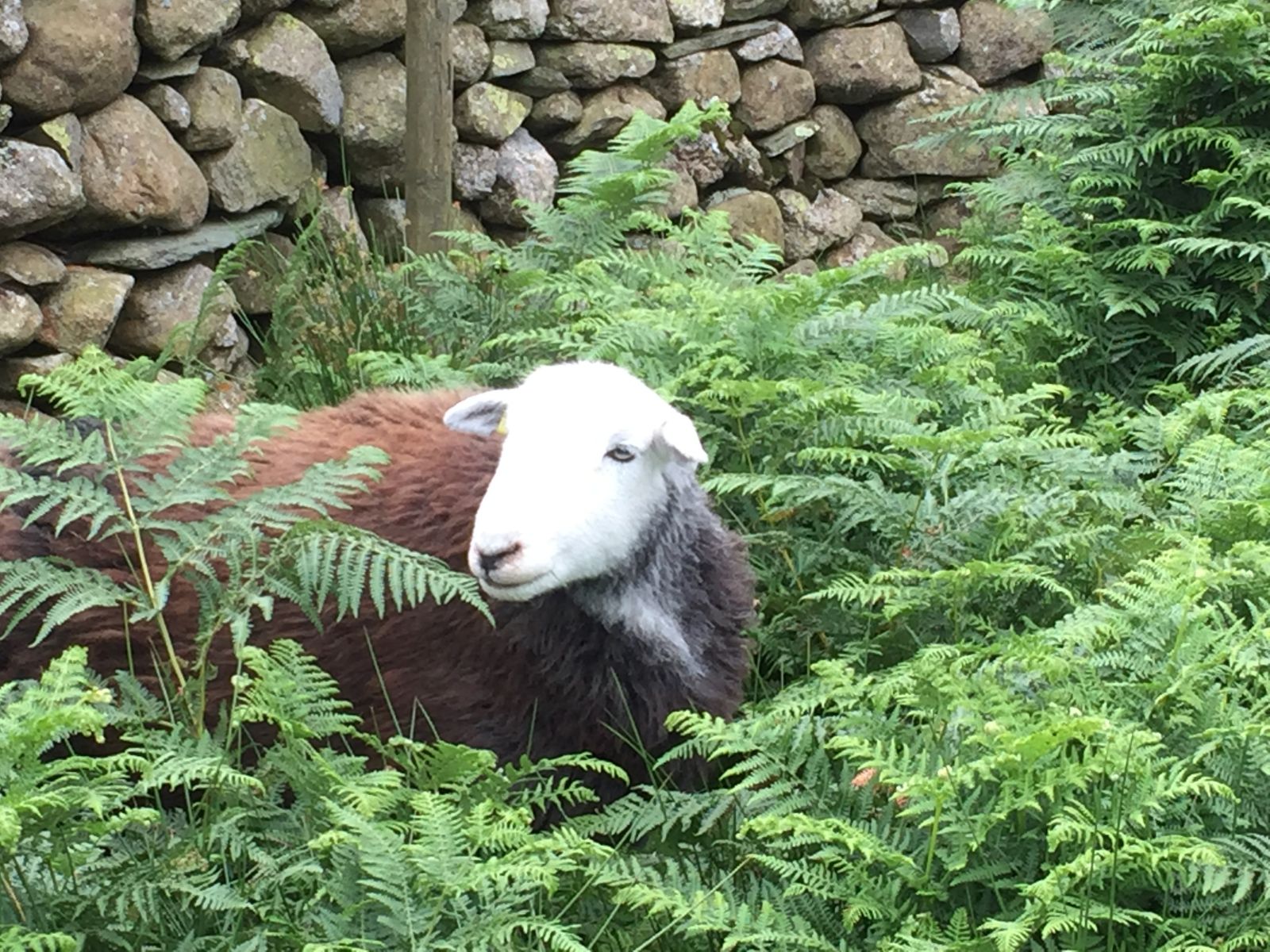For those who like more obscure railway sleeper information!
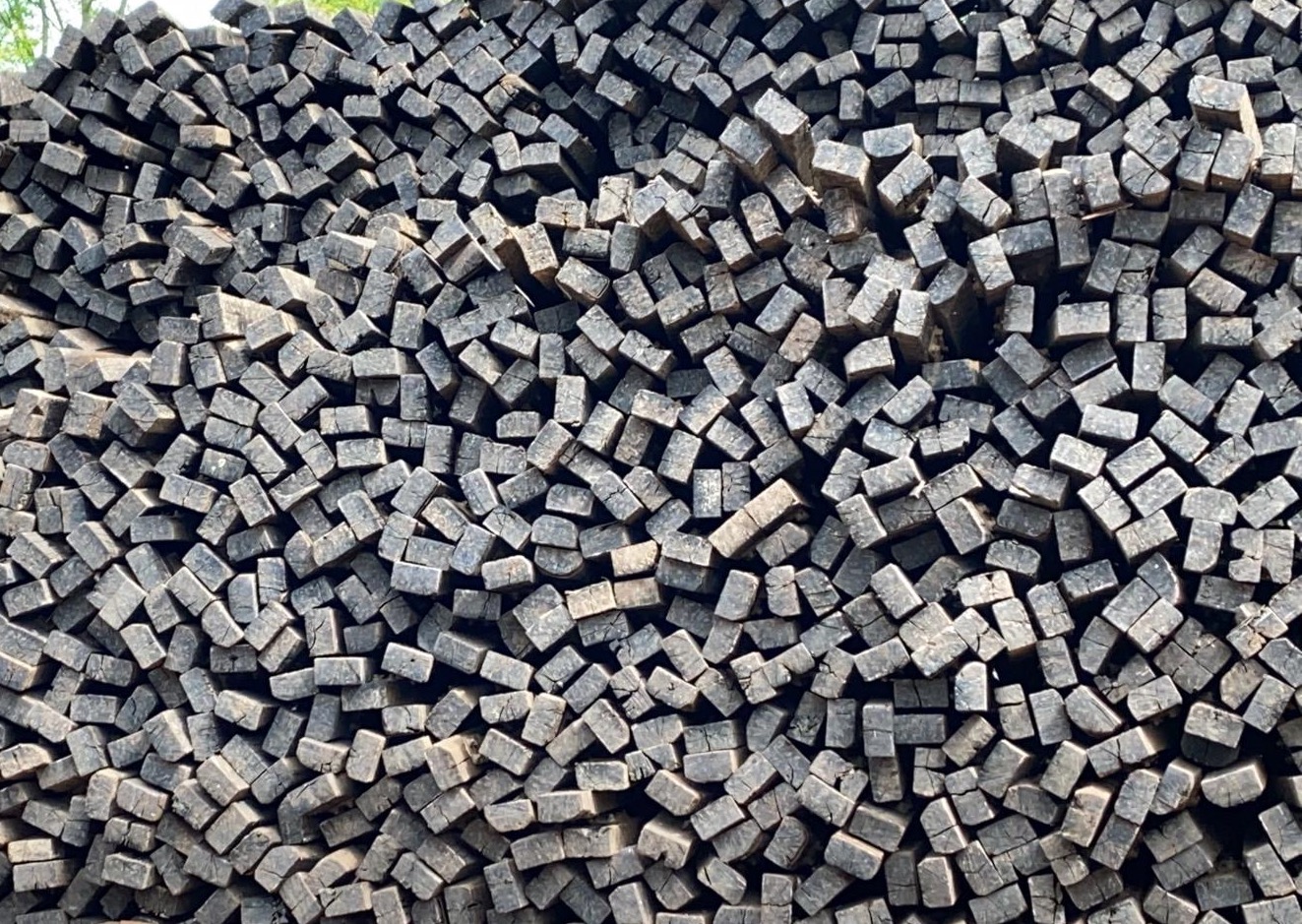
What is the difference between various grades of railway sleepers?
What size are rail guages?
Railways, Romans and horses bottoms....
How many railway sleepers are there in the UK?
What are railway sleepers made of now, and in the future?
Advantages of wooden railway sleepers over concrete ones.
Going back in history. Railway sleepers 80 years ago.
How accurate are the SIZES of railway sleepers?
ALL DIMENSIONS ARE APPROXIMATE! THEY ARE NOT EXACT!
Historically, railway sleepers never had to be exact in length, width or depth for their purpose on the railway track, and so the sawmills were fairly ‘give or take’ in the timbers they produced. Hence all sizes were approximate. That means that although a railway sleeper may be described as approximately 2600mm in length, or 300mm in width, or 125mm in depth it may in fact be several centimetres (or inches) longer or shorter, thicker or thinner. In addition, some railway sleepers were not cut perfectly square at the ends, which makes them hard to measure accurately. SO, ALLOW SOME LEEWAY in your precise calculations, and cater for trimming or creativity if necessary. This may be frustrating for those who love exactness in the world, but I guess there are some things in life which we just can't control! As it happens, most landscaping projects have an element of flexibility or tolerance in them and can cope with this. However if a specific project needs exact accuracy in length, width or depth then a landscaper may need to either cut the railway sleeper to their precise specifications, or think of using a different size or type of railway sleeper that is more accurate, e.g. the new pine ones.
The most common LENGTH for railway sleepers in the world is about 2.6 metres or 8ft 6" long.
However, as well as 2.6m we also stock other railway sleeper sizes such as 1.2m, 2.4m, 3.0m & 3.6m (approx 4ft, 8ft, 10ft & 12 ft)
The most common WIDTH for a railway sleeper is 250mm or 10".
We have other railway sleeper sizes as well such as 200mm or 300mm, (8" or 12")
The most common THICKNESS of railway sleepers is 125mm & 150mm. (5" & 6").
UK railway sleepers tend to be 125mm (5") & European railway sleepers 150mm (6").
Our selection of railway sleepers is now so varied that you will certainly find something that suits your plans and pocket. Light or dark coloured, square edged or rounded, new or weathered, modern or 'olde worlde'... it all depends on the visual effect you want, and the type of garden or house you live in. Don't expect reclaimed railway sleepers to be all the same. They all vary in their own unique way! If you're unsure which railway sleepers to choose for your project, visit our WHAT SLEEPERS ARE BEST? page.
What is the difference between various GRADES of railway sleepers?
GRADING RAILWAY SLEEPERS IS NOT AN EXACT SCIENCE !
Deciding with certainty what is a relay grade, grade 1, grade 2 or even grade 3 is inevitably subjective, and there is no universally accepted system of grading, throughout the UK, Europe, or the rest of the Universe. There are so many variables in grading old reclaimed railway sleepers, especially between different types of hardwood and softwood, that it is hard to generalise or make universal statements about different grades of railway sleepers. For example, a grade 2 used British Pine railway sleeper is generally straight, whereas a grade 2 used Dutch oak railway sleeper is often slightly bent! If you were being cynical, you'd probably suspect that railway sleeper companies classify a railway sleeper with as high a grade as they can get away with! But of course, that would be slanderous!
Always look at our railway sleeper photos, if you are unsure of what to expect, or give us a ring. It is best to be clear about what you may be getting, rather than chosing something that doesn't fit into your grand design.
General descriptions:
Top grade or 'Relay' railway sleepers
These are our best condition railway sleepers. Sometimes they are even good enough to be re-used on a railway track. But remember that they are still 30-40+ year old weathered timbers, and unrecognisable from the new piece of timber they started life as. They will last for years, but they are certainly not pristine!
1st grade railway sleepers
Reasonable condition middle grade railway sleepers. Generally pretty straight, with some cracks, but despite being weathered and 40 - 60 years old, they are in a fairly solid state, and suitable for most landscaping purposes, despite being retired from their hectic life on a railway track.
2nd grade
Lower condition railway sleepers, with many more imperfections and irregularities. They are often older and more weathered rustic versions of grade 1. They may have more rounded waney edges, cracks in the ends, slight decay, occasional damage and in the case of some hardwoods, can be bowed along the length, especially in the case of the Grade 2-3 Dutch oak railway sleepers.
3rd grade
Lowest grade railway sleepers, that may not be suitable for all landscaping purposes. They are most likely to be more irregular, weathered, battered, cracked, damaged, bowed and with some decay etc.... but not necessarily all at the same time! Despite all this, they may still last for ages, with some people particularly liking their battered and world weary appearance.
Visit us ! Nothing beats seeing the railway sleepers in the flesh !
PLEASE RING US FIRST to confirm a time to visit us or collect something. 0115 9890445.
Several people have made the journey to us and have been disappointed to find nobody here to help them. Please contact us first, to confirm a visiting time. We're flexible, MON - FRI (9.00 - 4.00) & SAT AM (9.00 - 12.00)
What size are rail guages? (the distance between rails)
There have been many rail gauges over the years. 4 feet 8.5 inches is widely used and is usually called standard, but there are many others still in widespread use. 1 Metre gauge can be found in many countries. 3 feet 6 inches for southern Africa and most of the Japanese network (Shinkanzen lines are standard). Russia and its old empire are 5 feet. Ireland is 5 feet 3 inches. Spain and Portugal mostly 5 feet 5 inches. India and Argentina are mostly 5 feet 6 inches as is the B.A.R.T. system in San Francisco. And let's not forget dear IKB's 7 feet and a quarter inch.
Thanks for information from B.Holland
...Which leads us to Railways, Romans & horses bottoms!
Did you know that the US shuttle design was determined by the width of a Roman horse's bottom ?
- The US standard railroad gauge (distance between the rails) is 4 feet 8.5 inches.
- That's an exceedingly odd number. Why was that gauge used?
- Because that's the way they built them in England, and English expatriates built the US Railroads.
- Why did the English build them like that?
- Because the first rail lines were built by the same people who built the pre-railroad tramways, and that's the gauge they used.
- Why did "they" use that gauge then?
- Because the people who built the tramways used the same jigs and tools that they used for building wagons, which used that wheel spacing.
- Okay! Why did the wagons have that particular odd wheel spacing ?
- Well, if they tried to use any other spacing, the wagon wheels would break on some of the old, long distance roads in England, because that's the spacing of the wheel ruts.
- So who built those old rutted roads?
- Imperial Rome built the first long distance roads in Europe (and England) for their legions. The roads have been used ever since.
- And the ruts in the roads?
- Roman war chariots formed the initial ruts, which everyone else had to match for fear of destroying their wagon wheels. Since the chariots were made for Imperial Rome, they were all alike in the matter of wheel spacing. The United States standard railroad gauge of 4 feet, 8.5 inches is derived from the original specifications for an Imperial Roman war chariot. And bureaucracies live forever. The Imperial Roman war chariots were made just wide enough to accommodate the back ends of two war horses.
Now the twist to the story... When you see a Space Shuttle sitting on its launch pad, there are two big booster rockets attached to the sides of the main fuel tank. These are solid rocket boosters, or SRBs. The SRBs are made by Thiokol at their factory in Utah. The engineers who designed the SRBs would have preferred to make them a bit fatter, but the SRBs had to be shipped by train from the factory to the launch site. The railroad line from the factory happens to run through a tunnel in the mountains. The SRBs had to fit through that tunnel. The tunnel is slightly wider than the railroad track, and the railroad track, as you now know, is about as wide as two horses' behinds. So, a major Space Shuttle design feature of what is arguably the world's most advanced transportation system was determined over two thousand years ago by the width of a horse's bottom ....
Source unknown
ACCUSED OF LIES, DISINFORMATION & FAKE KNOWLEDGE
Controversy!
E-MAIL RECIEVED: 22.10.18
Hi,
I just checked your website about railway sleepers and you provide fake knowledge about the origins of British roads. You claim that the Romans built the roads but this is a lie and disinformation. The Celts and the Etruscans built the roads and the Greeks and Romans came after.
I thought I would notify you because we live in a world where facts are ignored and replaced with fairytale stories of the Victor.
Many thanks,
Mike Jarratt.
REPLY TO THIS E-MAIL RECIEVED: 20.08.20
The information provided about railway sleepers is great and informative.
But although Mile Jarratt's claims are somewhat true, they are in part (about 80%) incorrect!.
Although Celts and Etruscans did build many of the first roads, their roads had no major structure about them, and followed more closely the contours of land and landscapes.
Romans tended to build much more structured roads in a more engineered way and more straighter, and systematic road systems. The Celts and Etruscans roads were not much more than dirt tracks when compared to the Romans!.
I thought I would notify you because we live in a world where facts are ignored and replaced with fairytale stories of the Victor.
Many Thanks
Andrew Robertson
How many railway sleepers are there in the UK?
With thanks to Ben Lavery for his curiosity & resourcefulness!!
17,645,400 give or take?!!
A few of weeks ago, I was sitting in a local café with my good friend Adam. I can’t quite recall how we got onto the topic, but Adam turned to me and asked “How many railway sleepers are there in the UK?”. Not being able to tell him, he decided it would be my ‘homework’. We laughed about it a bit, and somewhat forgot about it, but I was left pondering. A couple of weeks later, questioning a couple of people at work, and using my Google-fu I was able to give Adam an answer.
My first source was a colleague, a man who has been working on the railway for many years. He had no idea when I asked him, but helpfully said that in one chain there were roughly 22-23 timber railway sleepers. So, with there being 80 chains to one mile, all I did was multiply 22.5 by 80, with the result of 1,800 sleepers per mile.? My second source was the Office of Rail Regulation. They publish a Current National Rail Trends yearbook (downloadable). During the period 2010-2011, it claimed that there was 15,777km of track open to both passenger and freight traffic, this equates to roughly 9,803 miles of track.? Armed with these figures, I multiplied 9,803 miles by 1,800 sleepers per mile to give me an approximation of 17,645,400 railway sleepers on open railway in the UK. ?I presented my findings to the surprised but seemingly impressed Adam last Thursday, stressing that it is only an approximation, as it doesn’t cover sidings, depots, etc. It also assumes that all terrain is the same, and that all the railway sleepers are made of the same material, and that they have all been installed 100% accurately.
A surprising fun research exercise, it was good to get Googling for answers to seemingly impossible questions!
What are railway sleepers made of NOW? And in the FUTURE?
With thanks to Chris Lo for a great article
What is the way forward? Wood, Concrete, steel or plastic?
With ongoing track replacement and upgrades being carried out around the world, the railway sleeper market is huge. Chris examines the materials being used, from traditional timber to ultra-modern composites.
Railway sleepers, or railroad ties as they are known in the US, are a somewhat unglamorous component of the rail industry. But these blocks, which are laid horizontally underneath tracks to hold rail lines in place at the correct gauge, form the backbone of rail travel. Millions of these vital blocks are manufactured and distributed every year to satisfy demand for network expansions and line upgrades.
Apart from some experiments with stone block sleepers at the earliest stages of rail transport's development, timber has been the historically dominant material used for railway sleepers. Through the 20th century, new materials have emerged to respond to the need to accommodate higher axle loads and faster speeds. Here, we weigh up the advantages and disadvantages of the materials on offer.
Wooden sleepers
Given that wood has been used for the better part of two centuries to make railway sleepers, it is surprising that wooden railway sleepers still comprise the majority of the railway sleeper market. This is particularly the case in the US, where wood has a 93% share of the market – 16 million wooden railway sleepers are laid every year.
It's no accident that timber's market ascendancy has never waned. The natural properties of wood (usually hardwood such as oak, but cheaper softwood has been used on lighter, less busy lines) are suited to providing a resilient track with excellent dynamic attenuation of impact loading as well as noise and vibration reduction.
"Railway sleepers are laid horizontally underneath tracks to hold rail lines in place at the correct gauge."
Wooden railway sleepers are also comparatively cheap, as well as light and easy to transport, install and maintain. The average timber railway sleeper weighs around 160lb-250lb, whereas an equivalent sleeper made of concrete could weigh anything up to 800lb. This means that wooden railway sleepers are quicker and easier to install initially and require little to no specialist equipment or vehicles for maintenance, which means cost-savings for rail operators.
Proponents of timber for railway sleepers have also pointed to the strong second market for disused wooden railway sleepers. There is a booming business for reclaiming used railway sleepers as a hardy material for gardening and landscaping or to use as biomass fuel for cogeneration power plants. However, the majority of timber railway sleepers are soaked in coal tar creosote in order to protect them from environmental wear and insect infestation. Creosote extends the life of wooden sleepers (untreated timber sleepers usually have to be replaced every seven to 12 years) but is a toxic hazard which creates an added cost for disposal and has damaged the environmental credibility of the industry's traditional railway sleeper material.
Wood is also far more susceptible to wear and tear than more modern sleeper materials. Operators are increasingly replacing timber with concrete or composites in areas where sun and damp can warp or rot timber.
The case for concrete railway sleepers
Although concrete railway sleepers have captured only a small fraction of the market in the US, in Europe and Japan, where rail transport is arguably a higher priority, concrete railway sleepers have been gaining ground since the end of World War II. In Australia, concrete is used for most railway sleepers, and in the UK, rail operator Network Rail replaces 200,000 wooden railway sleepers with concrete ones every year.
Concrete sleepers are generally made from cast concrete slabs reinforced internally by steel wire. Early prototypes made with conventional reinforced concrete were often found too brittle to withstand high levels of dynamic load. Modern concrete railway sleepers are primarily manufactured using pre-stressed concrete – a technique where internal tension is introduced to the railway sleeper (usually to the high-tensile steel wire skeleton) before it is cast to counteract the external pressure the blocks undergo during service.
Concrete manufacturers such as Abetong Teknik, INFRASET and Stanton Bonna have made a strong case for the performance of concrete in the railway sleeper market. The material requires less maintenance and has a longer service life than timber sleepers, as it is not prone to environmental degradation, warping or insect infestation and its non-combustible nature means it lessens the potential for track fires.
"Timber has been the historically dominant material used for railway sleepers."
Pre-stressed concrete sleepers can also boast a generally superior load capacity and a smoother ride as a result of their greater weight and vertical / lateral stability. For the most modern high-speed lines, concrete (or composite plastic) becomes a necessity to bear higher speeds
But critics have been quick to point out that the weight and bulk of concrete railway sleepers is a significant disadvantage when it comes to the cost – both in time and money – of initial installation and later repairs.
While wooden railway sleepers can be put in place fairly quickly and with little specialist equipment, concrete sleepers must be installed using heavy machinery.
As pre-stressed concrete requires a skilled workforce and specialist equipment to manufacture, this high-quality material is certainly not a cheap option, although concrete manufacturers argue that the durability of the material means higher value over the lifespan of concrete sleepers.
Limited adoption of steel railway sleepers
Steel railway sleepers are often seen as a middle ground between wood and concrete. Sturdier than timber and less expensive than pre-stressed concrete, it seemed logical that steel could prove a boon to companies looking to undertake an economical track upgrade. Indeed, in some areas steel ties are still performing adequately after 50 years of service. A lesser reliance on ballast (approximately 60% less than required for concrete; 45% less than wood) also seems to tip the scale in steel's favour, especially in areas where timber is scarce.
But a number of unique problems have limited the adoption of steel for railway sleeper applications, especially in the US with its abundance of natural timber resources. Steel railway sleepers are susceptible to corrosion and rail operators have reported in the past that steel ties have been removed from tracks after rail seats became quickly fatigued, especially on lines with many turns.
"Concrete railway sleepers are generally made from cast concrete slabs reinforced internally by steel wire."
Capital Metro, the transit authority for Austin, Texas, provides a good example of another common problem specific to steel railway sleepers – the lack of insulation. Neoprene composite insulation keeps steel railway sleepers separate from electrified rails, but any error can wreak havoc on a rail network. A report in the Austin American-Statesman in March 2010 noted that as a result of conductivity problems and signal failures, Capital Metro has been forced to replace long sections of steel railway sleepers with timber at an additional cost of $90,000. "I wish I'd never done it," Capital Metro railroad manager Bill Le Jeune told the newspaper.
Plastic composite railway sleepers: the material of the future?
The most modern material being used for railway sleepers, plastic composite, represents manufacturers' latest attempt to find a material that fulfils the necessary criteria without any significant drawbacks. Composite railway sleepers are made from various mixtures of raw materials (plastic, rubber from used tyres, waste fibreglass) to create a synthetic material with the pliability and accessibility of wood, coupled with the durability of concrete.
Japan has been a leader in composite manufacturing. Japanese manufacturer Sekisui Chemical provided fibre-reinforced foamed urethane (FFU) railway sleepers for the Shinkansen high-speed train. 90,000 FFU sleepers are laid every year in the country, with nearly 1.5 million in current service.
Sekisui's composite railway sleepers made their European debut in 2004 when they were installed on the tracks of the Zollamt Bridge in Vienna, Austria. The material was chosen for the bridge because it matched the performance of wood while remaining unaffected by temperature changes and the constant moisture hanging in the air.
The advantages of composites are clear – the material can be manipulated and sawed just like wood, without any of the inbuilt disadvantages of its all-natural counterpart. It has the durability of concrete (composites have a service lifespan of 50 years or more), without concrete's weight and ponderous installation process. Unlike concrete railway sleepers, for which a track must be completely overhauled, composite railway sleepers can be installed piecemeal alongside older timber models.
"Composite railway sleepers are made from various mixtures of raw materials."
Composite railway sleepers have the additional advantage of being made from mostly recycled material, and are fully recyclable (they can be recycled into new sleepers). A 2006 report by the waste and resources action programme (WRAP) notes that a mile of wooden railway sleepers requires 810 mature oak trees, while an equivalent length of composite sleepers uses two million plastic bottles, 8.9 million plastic bags and 10,800 post-consumer tyres that could otherwise end up in landfill.
It's clear that composite material (or a derivation of the technology) holds the key to creating a widely adopted, environmentally friendly and operationally efficient substance for the railway sleeper industry. Cost concerns have generally limited its use to lines where timber and concrete are unsuitable, but as the manufacturing process becomes more refined and affordable for the sleeper market it seems there will be little standing in the way of composites catching up and overtaking timber as the railway sleeper material of choice.
Advantages of wooden railway sleepers over concrete ones
The benefits of wooden railway sleepers versus concrete / steel railway sleepers.
1. Transportation: When in transit and during handling, railway sleepers are likely to bear hits and knocks, wood is better able to withstand surface damage whereas the galvanised face of steel is thin and can easily be damaged leaving the steel open to the elements and causing rust.
2. Ease of Machining: The ease of which timber can be machined means companies are able to tailor their stock & range of railway sleepers to individual requirements and specifications. Bespoke design is a much more costly and time consuming process when dealing with steel and concrete.
3. Ease of Installation and Maintenance: Timber is a lighter material that steel or concrete, making it easier to handle. This means that the installation time and man power required is greatly reduced, saving money throughout the life of a railway sleeper, as it is lighter and far easier to maintain and handle, should it require any attention.
4. Cost Saving: Wooden railway sleepers are less expensive that steel in many areas. These include the raw material cost and transportation. Furthermore timber railway sleepers are easier to install and modify on site, meaning that money will constantly be saved throughout the life cycle of a railway sleeper through reduced maintenance costs.
Going back in History - railway sleepers 80 years ago
The production, import & export of railway sleepers during the 1st / 2nd World Wars.
This is what was written then:
"It is estimated that there are at present throughout the world about 1,250,000 kilometres of railway track for which approximately 3,000 million railway sleepers (crossties) are used, 95 percent of them made of wood. Since railway sleepers are heavy, bulky, and relatively cheap, they do not ordinarily comprise a large portion of the international trade in wood.
Types of railway sleepers - The term railway sleepers refers to the rectangular or approximately rectangular cross section supports laid transversely on the railway roadbed to support the rails. Railway sleepers used in Europe are almost exclusively of wood and are manufactured either in sawmills or in the forest. Production at the felling site in the forest is gradually declining in importance as a result of the disappearance of skilled labour. Axe-hewn, squared railway sleepers, which are frequently used in the Americas and other parts of the world, are not produced in Europe.
Railway sleepers may be made of hardwoods or softwoods, these being used for different purposes and under different conditions. Hardwood railway sleepers are made chiefly from oak, beech, and hornbeam; softwood railway sleepers from Scots pine, maritime pine (Pines pinaster), and larch. In Spain, eucalyptus is also used to make railway sleepers. Railway sleepers are usually cut from trees of 80 to 120 centimetres in circumference at a height of 1.30 meters from the ground, or from the tops and branches of large trees found in high forest or coppice with standards.
Standard gauge railway sleepers (1.46 meters) used in Europe may be classified into three different categories: German railway sleepers measure 16 cm. x 26 cm. x 2.6 m. or 2.7 m.; French, 14 cm. x 26 cm., and the same length; English, 12.5 cm. x 25 cm. These figures apply to railway sleepers sawn on all four sides. However, a certain amount of latitude is allowed for wane and curvature, there being three or four specifications. There are also the so-called "Swedish" or "Saxon" sleepers, where the upper and lower surfaces are sawn but the sides follow the natural contour of the rough log.
Switch or crossing railway sleepers vary in length from 2.60 m. to 5 m. or more; industrial railway sleepers are 1.80 m. to 2 m., and crossings generally 1.30 m. to 2 m.
The useful life of a railway sleeper depends upon its resistance to fungi, insects, and mechanical pressure. Protection against decay is obtained by impregnating with chemicals. The most widely used impregnating material is creosote, but solutions of copper or zinc salts are also used. By impregnation the useful life of a railway sleeper can be increased from 5-8 years to 25-30 years. Sleepers must have certain required mechanical properties. Damage to railway sleepers due to mechanical defects has become more frequent because both the weight of the loads carried and the speed of trains have increased. Such mechanical damage consists mainly in crushing, splitting, becoming imbedded, etc. "
The railway sleeper market between the two world wars
Data on international trade in railway sleepers between World Wars I and II can be found in the yearbooks of the Comité International du Bois, published first at Vienna and later at Brussels; in the publications of the International Institute of Agriculture, and in Silvae Orbis, referred to in Tables below.
IMPORTS OF RAILWAY SLEEPERS BETWEEN THE TWO WORLD WARS
|
Country |
1926-28 |
1931-33 |
1936-38 |
|
1000 m³ (s) |
|||
|
Belgium-Luxembourg |
67 |
38 |
84 |
|
Czechoslovakia |
35 |
1 |
12 |
|
Denmark |
24 |
15 |
6 |
|
France |
16 |
76 |
8 |
|
Germany |
411 |
17 |
69 |
|
Greece |
5 |
7 |
6 |
|
Hungary |
57 |
7 |
34 |
|
Netherlands |
72 |
77 |
76 |
|
Spain |
160 |
30 |
... |
|
Switzerland |
7 |
2 |
1 |
|
United Kingdom |
346 |
337 |
540 |
|
China |
41 |
135 |
105 |
|
Canada |
51 |
24 |
20 |
|
United States |
94 |
37 |
32 |
|
TOTAL |
1,386 |
803 |
993 |
SOURCE: Walter Grottian, "Die Umsatzmengen im Weltholzhandel 1925-1938" Silvae Orbit, Berlin: C.I.S., 1942, pp. 140-141. Computed from yearly figures.
EXPORTS OF RAILWAY SLEEPERS BETWEEN THE TWO WORLD WARS
|
Country |
1926-28 |
1931-33 |
1936-38 |
|
1000 m³ (s) |
|||
|
Austria |
87 |
3 |
13 |
|
Czechoslovakia |
30 |
... |
2 |
|
Finland |
16 |
1 |
7 |
|
France |
119 |
28 |
93 |
|
Germany |
49 |
34 |
3 |
|
Poland |
364 |
157 |
255 |
|
Rumania |
3 |
2 |
27 |
|
Sweden |
47 |
19 |
11 |
|
Yugoslavia |
281 |
80 |
90 |
|
Baltic States1 |
15 |
47 |
144 |
|
U.S.S.R. |
96 |
282 |
186 |
|
Canada |
115 |
67 |
92 |
|
United States |
336 |
153 |
173 |
|
Turkey |
9 |
1 |
... |
|
TOTAL |
1,567 |
874 |
1,096 |
SOURCE: Walter Grottian, "Die Umsatzmengen im Weltholzhandel 1925-1938," Silvae Orbis, Berlin: C.I.S. 1942, pp. 140-141. Computed from yearly figures.
The principal exporting countries were Poland, Yugoslavia, the Baltic countries, Rumania, and Soviet Russia. The U.S.S.R. exported as much as 579,000 m³ (s) of railway sleepers in 1930. The United States of America exported large quantities to the European market. France had some exports but was a net importing country. Its exports of hardwood railway sleepers went mainly to Belgium, with lesser quantities to the Netherlands and the French colonies; softwood railway sleepers were shipped principally to the United Kingdom and in small quantities to Spain, Belgium, Luxembourg, and the Netherlands.
European imports attained a maximum figure of 1,653,000 m³ (s) in 1930 and decreased thereafter. This drop in trade corresponds to a general worldwide trend. Railway sleepers constituted 2.5 percent of all timber exports in 1929 but only 1.9 percent in 1937.
International market after world war II
During the war most European countries were unable to carry out much track maintenance or lay new railway sleepers. Consequently the railway sleeper market was quiet and countries attempted to supply their own needs from domestic production. Owing to shortages of chemical products, few impregnated sleepers were used.
After the end of the 2nd world war, there was a great demand for railway sleepers, due not only to deferred maintenance requirements and the need for replacement of non-treated railway sleepers which had deteriorated rapidly, but also to the vast amount of destruction caused in the last year of the war by military action. Such destruction particularly affected France, Belgium, the Netherlands, Italy, and Soviet Russia, but there was also a considerable amount of damage in Africa, from Morocco to Egypt.
REQUIREMENTS OF WOODEN RAILWAY SLEEPERS AFTER THE 2ND WORLD WAR
|
Country |
Requirements |
||||
|
Length of railway lines |
Railway sleepers |
Round wood |
|||
|
Requirements known |
km. |
in thousands |
1000 m³ |
||
|
|
Germany: French zone |
7,200 |
200 |
28 |
|
|
|
Austria |
7,500 |
1,100 |
150 |
|
|
|
Belgium |
8,000 |
1,500 |
1 215 |
|
|
|
Denmark |
3,000 |
455 |
1 65 |
|
|
|
France |
62,000 |
7,700 |
1,100 |
|
|
|
Italy |
20,500 |
² 3,500 |
500 |
|
|
|
Luxembourg |
500 |
41 |
6 |
|
|
|
Norway |
5,000 |
450 |
1 65 |
|
|
|
Netherlands |
5,000 |
³ 1,000 |
1 143 |
|
|
|
Poland |
35,000 |
3,000 |
1 430 |
|
|
|
Czechoslovakia |
14,900 |
1,700 |
240 |
|
|
|
Subtotal |
168,600 |
20,646 |
2,942 |
|
|
|
Average per km. |
|
122,5 |
16,3 |
|
|
Requirements unknown |
|
|
|
||
|
|
Germany: |
||||
|
|
Bizone |
36,000 |
|
|
|
|
|
Soviet zone |
15,700 |
|
|
|
|
|
Bulgaria |
3,400 |
|
|
|
|
|
Greece |
1,500 |
|
|
|
|
|
Hungary |
8,500 |
|
|
|
|
|
Rumania |
10,500 |
|
|
|
|
|
Sweden |
8,400 |
|
|
|
|
|
Switzerland |
4,300 |
|
|
|
|
|
Yugoslavia |
10,100 |
|
|
|
|
|
Subtotal |
98,400 |
|
4 1,600 |
|
|
|
Total |
267,000 |
|
4,542 |
|
|
|
United Kingdom |
59,100 |
5 4,000 |
570 |
|
|
GRAND TOTAL |
326,100 |
|
5,112 |
||
EXPORTS OF RAILWAY SLEEPERS AFTER THE 2ND WORLD WAR
|
Exporting country |
1946 |
1947 |
Jan.-June 1948 |
|
|
1000 m³ (s) |
||||
|
Austria |
- |
- |
- |
|
|
Czechoslovakia |
- |
27 |
4,9 |
|
|
Finland |
2 |
13 |
1,0 |
|
|
France |
9 |
19 |
15,1 |
|
|
Germany: |
|
|
|
|
|
|
British zone |
- |
- |
- |
|
|
French zone |
... |
... |
... |
|
|
American zone |
... |
... |
... |
|
|
Russian zone |
... |
... |
... |
|
Norway |
* |
* |
- |
|
|
Poland |
- |
- |
1- |
|
|
Portugal |
... |
... |
- |
|
|
Sweden |
52 |
²36 |
12,7 |
|
|
Switzerland |
* |
... |
... |
|
|
Yugoslavia |
... |
... |
... |
|
|
Other European countries |
+10 |
... |
... |
|
|
U.S.S.R. |
... |
... |
... |
|
|
Canada |
113 |
222 |
188,5 |
|
|
U.S.A. |
+63 |
³410 |
124,7 |
|
|
TOTAL |
249 |
... |
... |
|
SOURCE: FAO/ECE, Timber Statistics for the Years 1946-1947, Geneva, March 1948, and Timber Statistics, Quarterly Bulletin, Vol. I, No. 2, Geneva, October 1948.
IMPORTS OF RAILWAY SLEEPERS AFTER THE 2ND WORLD WAR
|
Importing country |
1946 |
1947 |
Jan.-June 1948 |
|
1000 m³ (s) |
|||
|
Belgium |
36 |
35 |
1,5 |
|
Denmark |
12 |
9 |
7,0 |
|
France |
21 |
82 |
22,3 |
|
Greece |
* |
1 |
0,7 |
|
Hungary |
2 |
6 |
23,0 |
|
Italy |
- |
- |
28,9 |
|
Netherlands |
48 |
80 |
120,9 |
|
Poland |
- |
1 |
... |
|
Switzerland |
* |
1 |
7,7 |
|
United Kingdom |
84 |
297 |
120,1 |
|
Other European countries |
3 |
14 |
16,0 |
|
Egypt |
+14 |
... |
13,0 |
|
Other Middle East countries |
* |
... |
* |
|
French North Africa |
+6 |
... |
... |
|
TOTAL |
226 |
- |
... |
SOURCE: FAO/ECE, Timber Statistics for the Years 1946-1947, Geneva, March 1948, and Timber Statistics, Quarterly Bulletin, Vol. I, No. 2, Geneva, October 1948.
United States exports started expanding in April 1947, particularly when non-treated railway sleepers were eliminated from the list of controlled export commodities and were placed on the list of commodities requiring only a license. Treated railway sleepers remained on the controlled list, and in 1947 only one million treated sleepers were exported. In the first quarter of 1948, United States exports of treated and non-treated railway sleepers amounted to 23.6 million board feet - a monthly average of approximately half of that for the year 1947.
UNITED STATES EXPORTS OF RAILWAY SLEEPERS - ANNUAL AVERAGE 1935-1939
|
Country of destination |
Quantity |
Value |
||||
|
Treated sleepers |
Non-treated sleepers |
Total |
Treated sleepers |
Non-treated sleepers |
Total |
|
|
1000 board feet |
dollars |
|||||
|
China |
* |
36,459 |
36,459 |
* |
480,090 |
480,090 |
|
Canada |
5,581 |
1,573 |
7,151 |
225,370 |
41,006 |
266,376 |
|
Guatemala |
5,155 |
* |
5,155 |
159,092 |
* |
159,092 |
|
Costa Rica |
3,767 |
2 |
3,769 |
129,223 |
39 |
129,268 |
|
Peru |
107 |
3,535 |
3,642 |
1,942 |
104,146 |
106,088 |
|
Honduras |
3,515 |
5 |
3,520 |
105,404 |
107 |
105,511 |
|
Cuba |
2,216 |
15 |
2,231 |
83,377 |
374 |
83,761 |
|
Mexico |
973 |
1,181 |
2,154 |
40,270 |
30,589 |
70,859 |
|
Panama |
1,964 |
1 |
1,965 |
74,704 |
56 |
74,760 |
|
Venezuela |
214 |
37 |
251 |
6,754 |
776 |
7,529 |
|
Netherlands |
* |
184 |
184 |
* |
2,060 |
2,060 |
|
United Kingdom |
99 |
37 |
|
|||
VOTE OF CONFIDENCE!
Please help us spread the word! If you've found our website helpful or inspiring please leave feedback or 'Like us' on Facebook, Instagram or Twitter. A simple way of letting people know "This is a really useful website!" Thanks



BUY ONLINE or
RING DIRECT

0115 9890445
enquiries@railwaysleepers.com
WHICH
RAILWAY SLEEPERS ARE
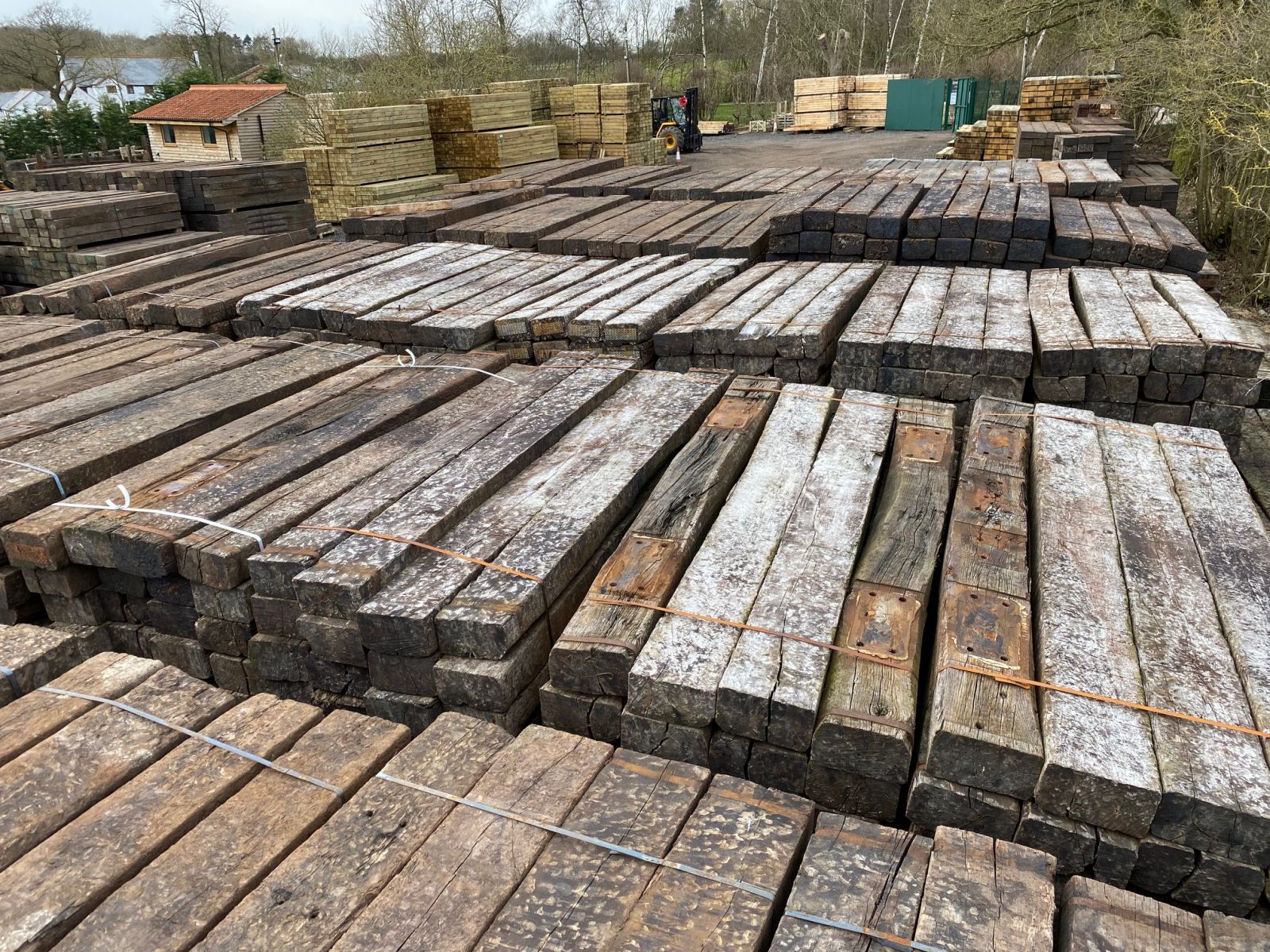
THE BEST?
JUST A CLICK CLICK CLICK AWAY
INSPIRATION?
NEED IDEAS?
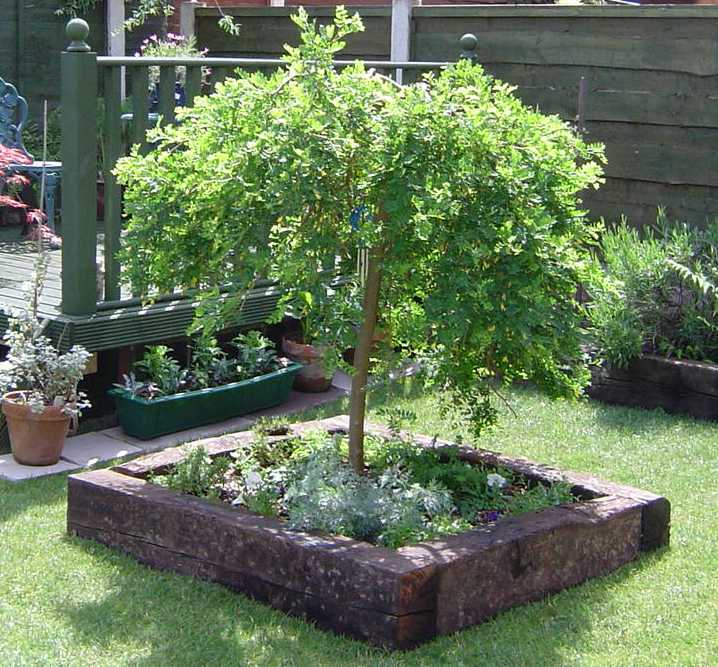
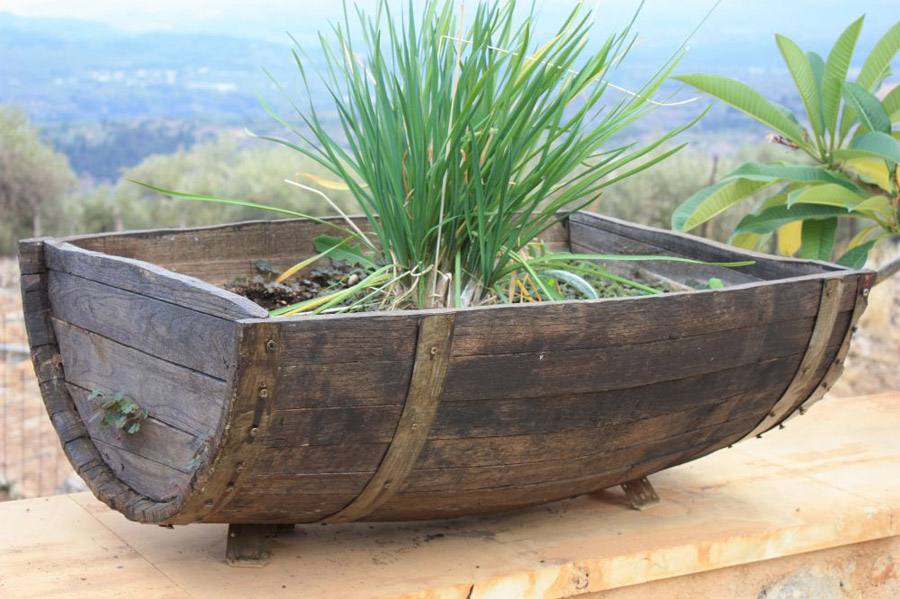
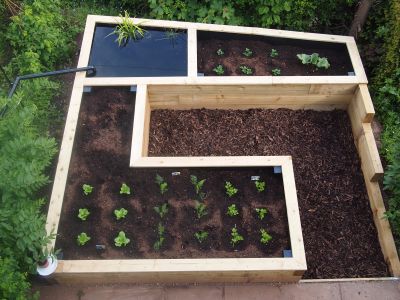
CLICK for the WORLD'S
LARGEST COLLECTION of
RAILWAY SLEEPER PROJECTS
SHARE
your project and creation
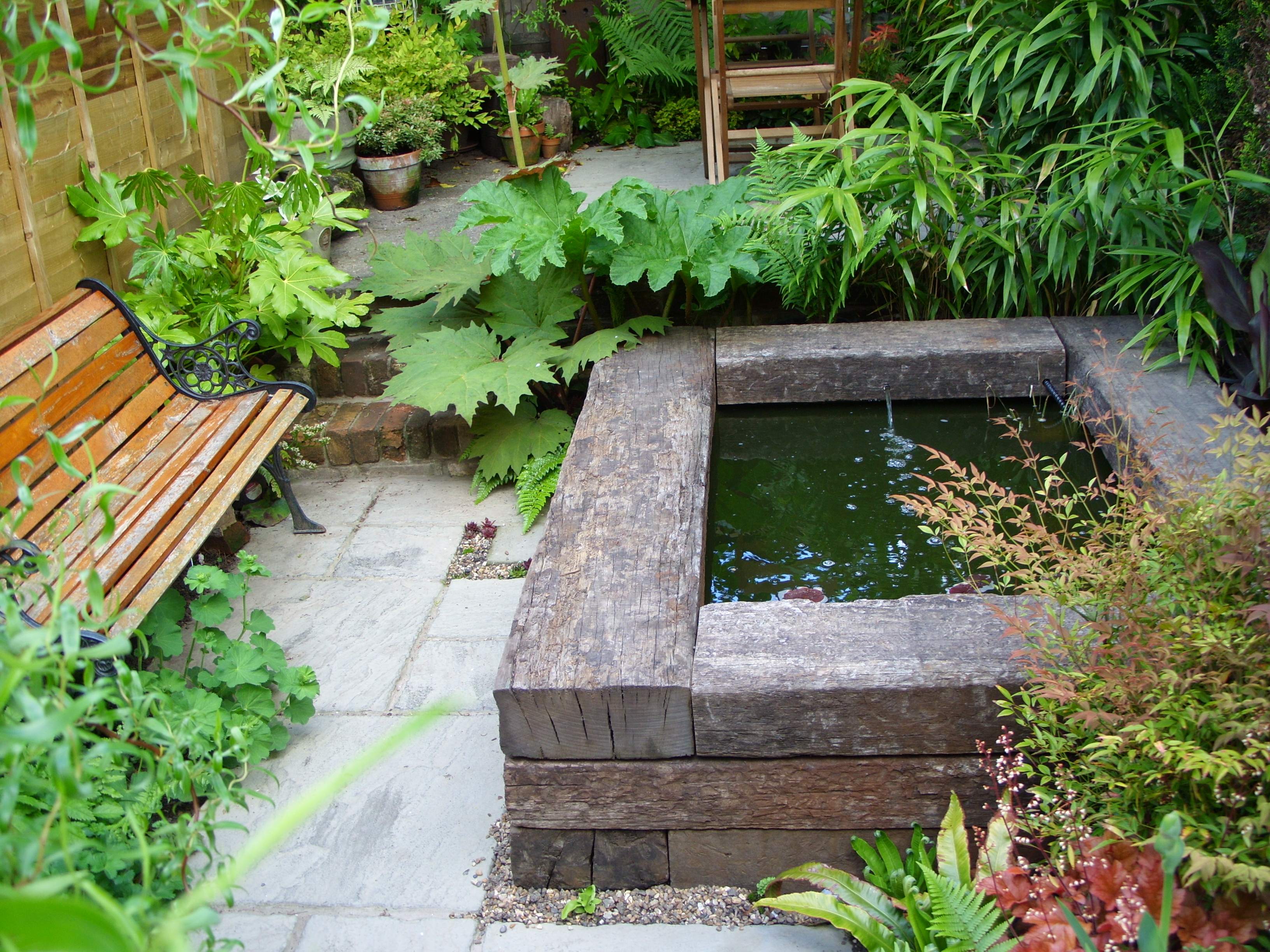
SEND your PHOTOS to
enquiries@railwaysleepers.com
or WhatsApp 07816 959310
CONFUSED?
Need some advice?
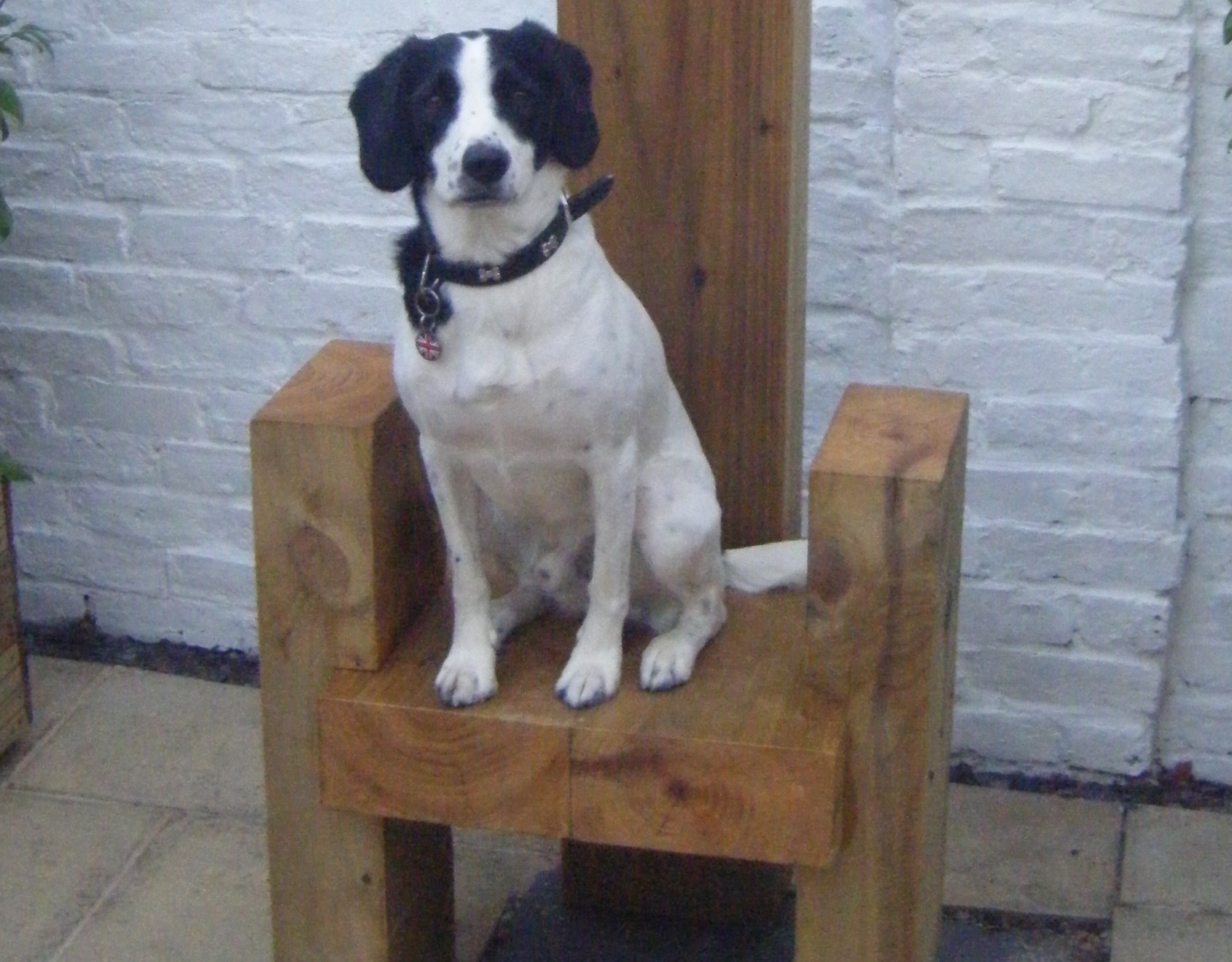
CONTACT US & we'll help you
work out what items you need.
0115 9890445


